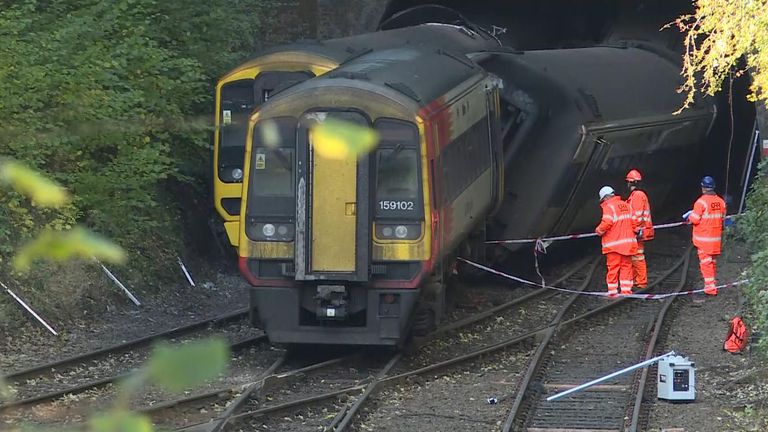One of the trains involved in the Salisbury crash on Sunday ran 220 metres past a stop signal before hitting another service, investigators have said.
The driver did attempt to break before reaching the signal, the Rail Accident Investigation Branch (RAIB) added.
But despite the intervention of the train's automatic protection system, which should assist with emergency braking, the South Western Railway (SWR) train did not begin to slow until it reached a junction close to Fisherton Tunnel.
In a preliminary report, the RAIB said that was because its wheels slipped on the rails, causing it to slam into the side of a Great Western Railway service.
Both trains derailed and continued "some distance" into the tunnel before coming to a stop, the RAIB said.
It will be looking at how Network Rail manages what it calls "low wheel/rail adhesion".
In addition, it will examine Network Rail and SWR's general policies on the subject.
The driver of the SWR service suffered "life-changing injuries", police said.
Thirteen passengers were treated in hospital for minor injuries.



